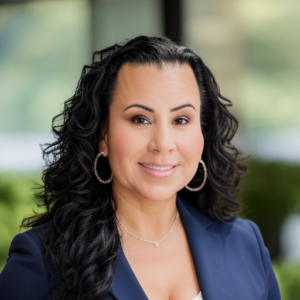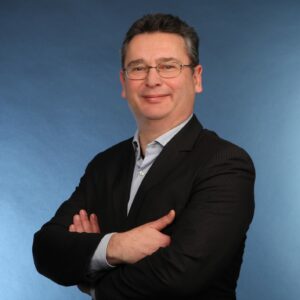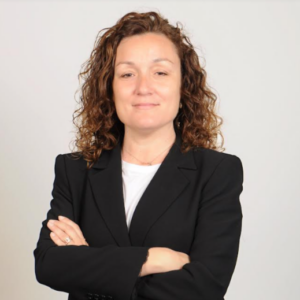Sustainability and circularity are no longer a nice-to-have, they are the very foundation of business operations. Dell Technologies recognizes the importance of sustainable practices and puts every aspect of our business under the microscope to realize green efficiencies. We’re also helping our customers realize their sustainability goals.
Gina Cano, senior director of Strategic Business Development—ESG/Sustainability Strategy & Governance, and Erica Lambert, senior vice president Customer Success at Dell Technologies, survey the landscape regularly. For this article, they sat down to chat with Silvia de la Cagiga and Quinten Ockers, service account managers at Dell Technologies, on why sustainability is a must-have.
Silvia de la Cagiga: What’s your view on sustainability in technology?
Gina Cano: Sustainability is multi-faceted and increasingly critical; it’s no longer a nice-to-have but a must-have. This is especially so when we evaluate how energy efficiency and renewable energy impact data centers. Green computing factors in digital inclusion and ethical considerations as well.
Another factor is the huge environmental impact of e-waste. We need to be smart about how we manage e-waste, which brings us to sustainable supply chains. In addition, the global increase in regulations and standards is definitely something that companies like ours have to consider.
Quinten Ockers: With that in mind, what factors do we consider when helping organizations with sustainable technology and infrastructure?

Erica Lambert: Companies are realizing that they have to make sustainability a priority in order for them to be viable and to meet the needs of their customers, employees, as well as key stakeholders and shareholders.
Regulations are one piece of it, but trust and brand recognition are also critical. Our customers are trying to meet the needs of their business and their customers long term. And they look to partners like Dell to help with green data centers and help them achieve the carbon-neutral goals that they are setting for themselves.
de la Cagiga: What are some barriers to organizations implementing sustainable systems, technology and infrastructure?
Cano: The lack of awareness and expertise are the biggest obstacles. There tends to be an approach that if we put this on the back burner, it will go away. It won’t. There are also the cost concerns that are often associated with being sustainable. There’s sometimes a short-term focus on quarterly profits that can overshadow the long-term benefits that come with sustainability. The regulatory piece can be confusing, and it can be difficult to translate a requirement to a data center.
Lambert: I agree. As a business leader, I struggle with what to prioritize. Of all the things that we can do, which ones will have the biggest impact on business sustainability and align with regulatory regulations? Are we making the right choices with limited resources and limited time?
Ockers: What do organizations risk if they ignore sustainability in their practices?
Lambert: There will come a time when they will have to pay, whether through taxation or fees. Or they might just not be able to play in a given market because they are not meeting regulations.
Customers are making sustainability a priority and embedding related expectations into their buying decisions. Boards are also really leaning in and making sustainability one of their priorities and putting teams and governance in place around sustainability progress.
de la Cagiga: So, how can we balance innovation with our customers’ sustainability goals?
Lambert: That’s what we are looking at as a whole from a corporate level down to our services and our solutions in our portfolio.

It can start with sustainable product design—designing hardware to be more energy-efficient, durable, easy to repair, and upgrade. That’s going to help us help our customers reuse and recycle materials and get the most out of the life of their equipment.
We can advise customers about how to use more renewable energy in the data center. We are very familiar with e-waste recycling and are looking to expand the program and help customers achieve more circularity in operations. Gina mentioned our asset recovery services. We can take away not only Dell products but any technology that customers have in their data centers and ensure clean disposal. We are not only looking at how we service a customer but how that helps sustainability upstream and downstream and harness spare parts.
Probably the simplest way to balance innovation with sustainable goals is to be more transparent and share innovative approaches. We look at services at Dell as a lifecycle. We have services to help them get the most out of their technology at every step of the way from when they’re installing it in the data center to refreshing infrastructure.
We can help our customers understand what their goals are and map a blueprint outlining priorities and expectations and what they should prioritize to meet their sustainability goals. We want to understand our customers—what they need help with, where they are struggling—and we will be there to support you.
The sustainability focus at Dell also evaluates how we can build technology with lower emissions, using less energy and more recycled packaging; the list goes on and on. We want to meet the needs of the customers while lowering emissions every step of the way.
Ockers: What are your final thoughts?
Cano: Dell continues to innovate while supporting our customers. We’re pushing for IT and sustainability goals to be cohesive, not separate. They should be embedded into your entire operations. Innovation is a driver. How can you be more innovative while using less resource-intensive systems and applications?
Balancing short and long-term goals is going to be absolutely key. We are all businesses oriented oriented to make a profit. However, there needs to be a balance. Ensure that you are compliant with regulations and use those guidelines to be profitable while being sustainable.
Lambert: At Dell, our purpose continues to be to create technologies that drive human progress. Our vision is to become the essential technology company for the data era. To truly achieve that vision, sustainability has to be woven through everything we do. We need to be leading on that front and helping our customers achieve their goals as well. And that is exactly what we are doing.
In this interview:






